Corita challenged both the church and the art world with her expressive creations, stirring a remarkable disruption, and offered fundamental principles, tools, and techniques to enhance and encourage artistic creativity. Corita’s work reflected her concerns about poverty, addressing key themes of racism and war. Her messages of peace and social justice continue to resonate with us today.

Corita Kent (1918–1986), born Frances Elizabeth Kent and also known as Sister Mary Corita Kent, was an artist with an innovative approach to design and education. At age 18 she entered the religious order Immaculate Heart of Mary, eventually teaching and then heading the art department at Immaculate Heart College.
By the 1960s, her vibrant serigraphs were drawing international acclaim. Corita’s work reflected her concerns about poverty, addressing key themes of racism and war. During her career, her artwork evolved from using figurative and religious imagery to incorporating advertising images and slogans, popular song lyrics, biblical verses, and literature.
Throughout the ’60s, her work became increasingly political, urging viewers to consider poverty, racism, and social injustice.


Corita Kent’s art stood as a testament to her activism, weaving together vibrant visuals and spiritually-rooted social commentary to passionately advocate for love and tolerance.
Her primary medium was screen printing, also known as Serigraphy. She was a self-taught artist and her innovative methods pushed back the limitations of two-dimensional media of the times. Corita’s emphasis on printing was partially due to her wish for democratic outreach, as she wished for affordable art for the masses. Her artwork, with its messages of love and peace, was particularly popular during the social upheavals of the 1960s and 1970s.
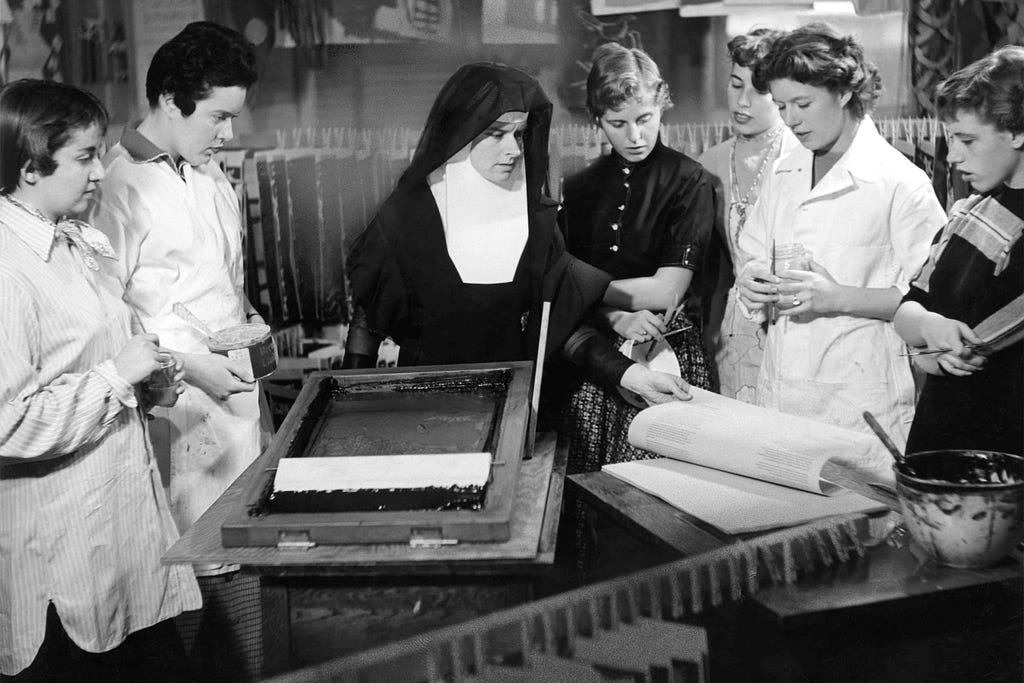

In 1968, she left the order and moved to Boston. Following a cancer diagnosis in the early 1970s, Corita Kent entered a profoundly prolific phase in her career. During this time, Corita achieved remarkable work.
She designed the Rainbow Swash for the LNG tank in Boston in 1971, what is said to be the largest copyrighted design in the world — a painting on the side of the Boston Gas Co.’s huge natural gas tank. The enormous rainbow — six simple strokes of color arching across the 150-foot-high gas tank — has been a Boston landmark ever since.
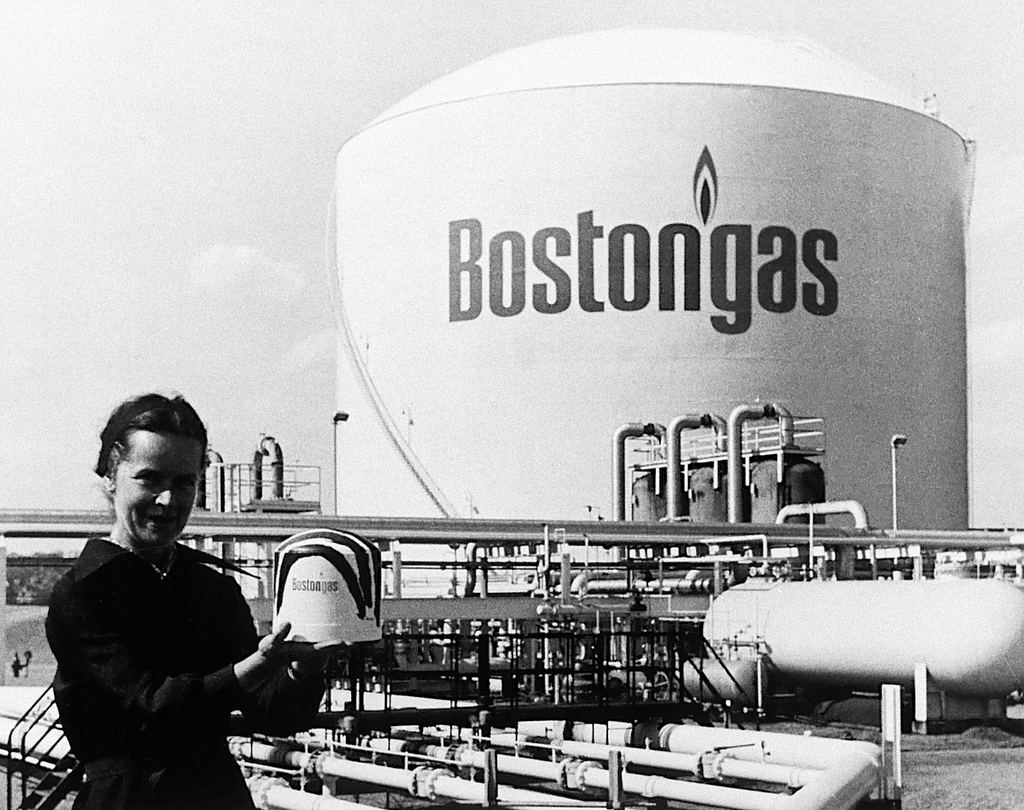

In 1985, former nun-turned-designer Corita Kent created the special Love stamp for the United States Postal Service, an ink-and-watercolor collage showing the colors of the rainbow, imagining it being unveiled at the United Nations.
But the premiere was held on the set of the television series The Love Boat. Kent boycotted the official ceremony celebrating the issuance of her 22-cent stamp in April 1985 and didn’t attend because the government chose to hold the event on the set of a television show that didn’t match the message of her artwork.
She said at the time that she did not approve of the show because “the TV definition of love is nothing very deep, and everything gets resolved in an hour. I think it’s dangerous to educate people that way — that love happens that fast, that troubles are resolved that easily.”
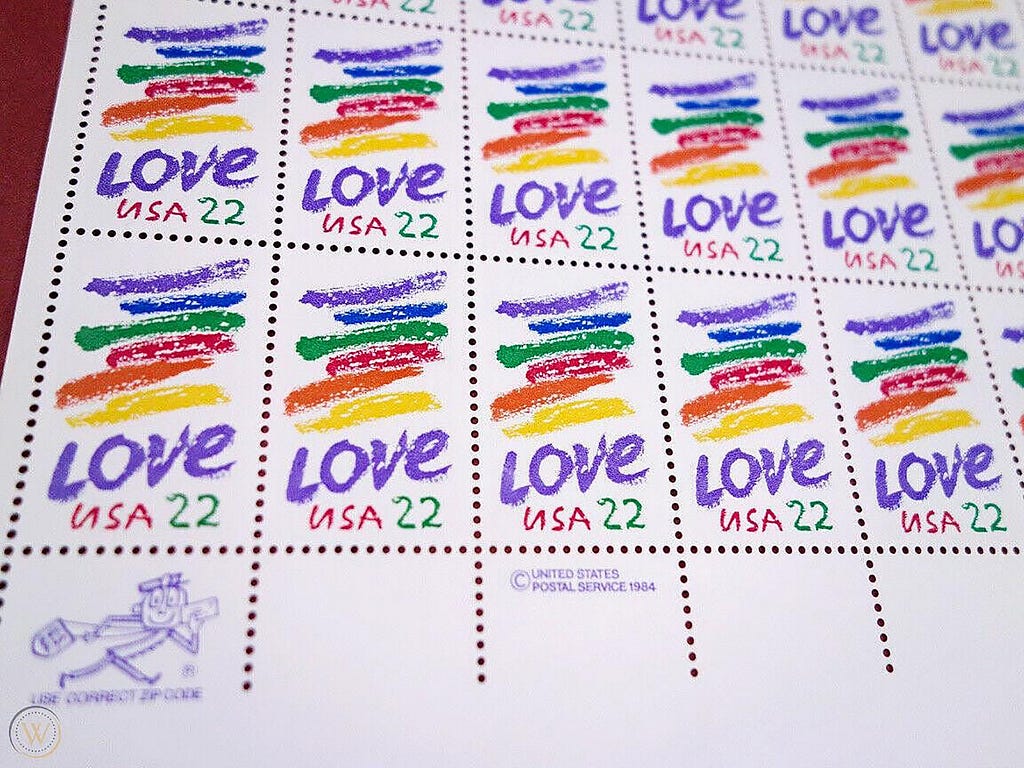
And the equally simple “LOVE” design — composed of six bright slashes of color — became an immediate best-seller as a stamp, with more than 700 million issued at last count. On New Year’s Eve in 1984, when a 20-foot replica of the design was lowered from the Old Post Office in Washington, a crowd of 65,000 cheered and applauded. Although hers was the fourth in a series of five U.S. Postal Service stamps using love as a theme, the Kent design is generally considered the best-known and most popular.
After 1970, her work evolved into a sparser, introspective style, influenced by living in a new environment, a secular life, and her battles with cancer. She remained active in social causes until she died in 1986. At the time of her death, she had created almost 800 serigraph editions, thousands of watercolors, and innumerable public and private commissions.
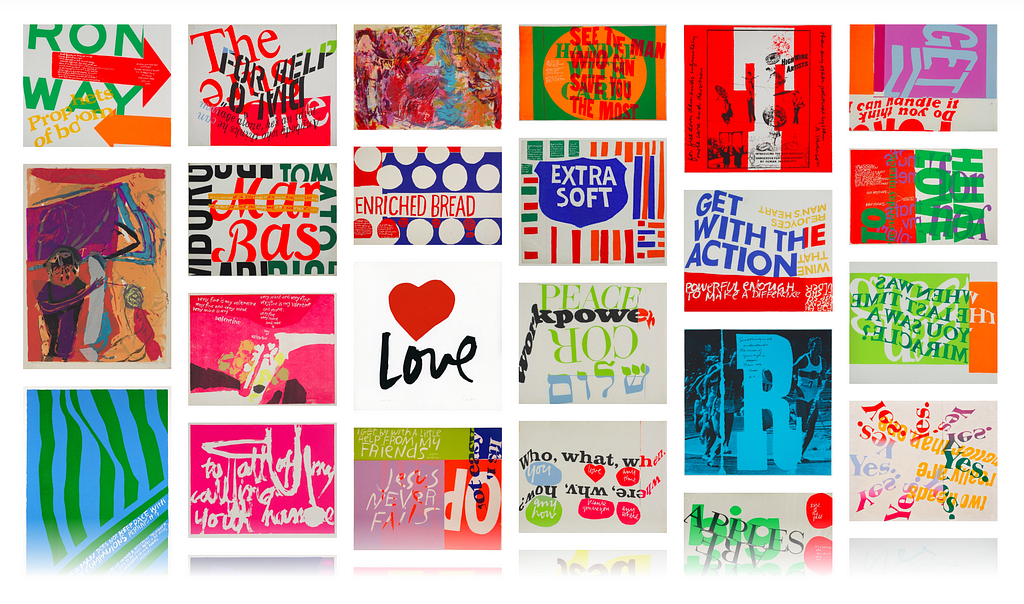
Learning by Heart: Teachings to Free the Creative Spirit
Artist and educator Corita Kent inspired generations of artists, and the truth of her words “We can all talk, we can all write, and if the blocks are removed, we can all draw and paint and make things.” still shines through.
Corita’s original projects and exercises, developed through more than 30 years as an art teacher, and richly illustrated with 300 thought-provoking images, are as inspiring and as freeing today as they were during her lifetime.
This is a book that challenges us to observe our world with fresh eyes and is full of advice on how to demystify the creative process was no easy task.
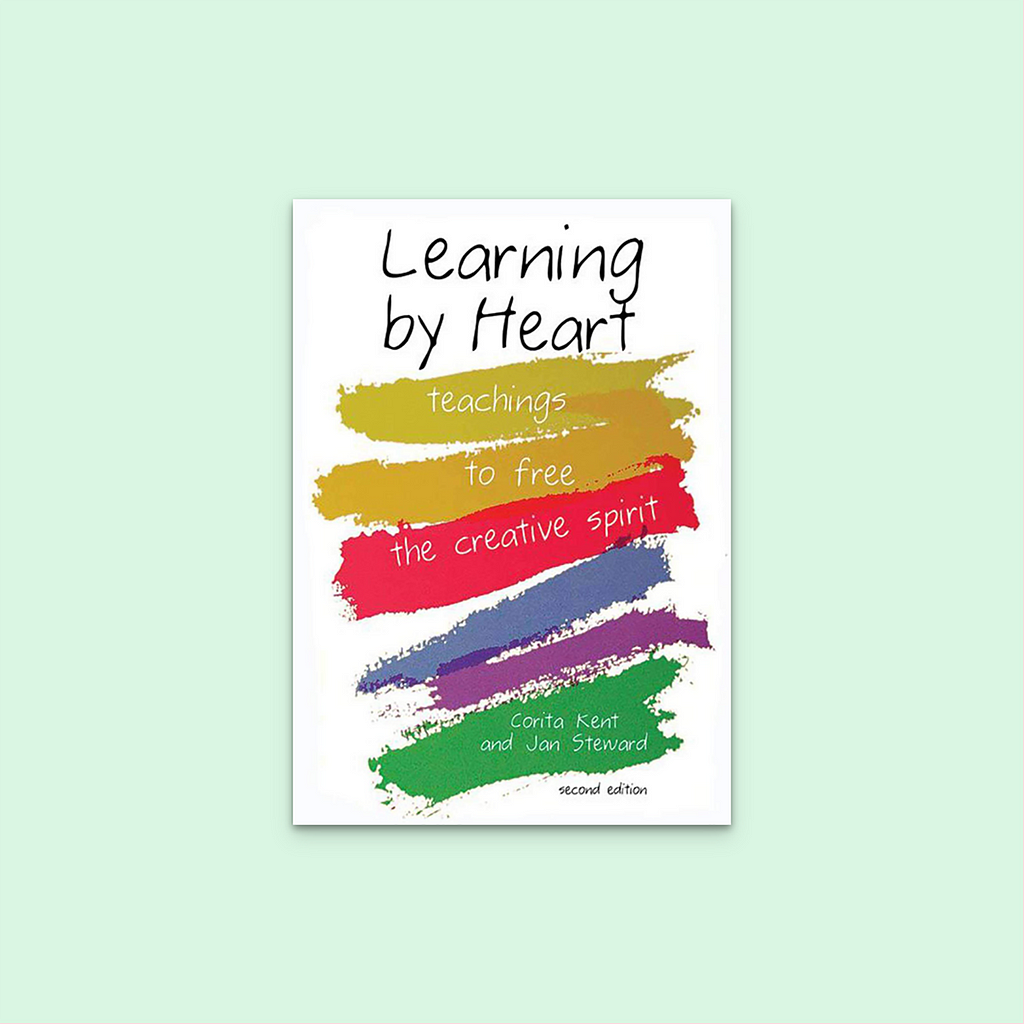
Co-author Jan Steward (1929–2020) was an artist and photographer in LA. She also was a student and friend of Corita.
In the 2008 foreword to the book, she wrote:
It was in 1979 on a trip to Little Tokyo in Los Angeles when Corita asked me to write this book. We would work together. It would be quick and easy. It was neither. She lived in Boston and I in Los Angeles. We worked by letter and phone, and progress was painfully slow. We worked for hours on content and every few meetings the concept would change — sometimes radically.
They went back and forth about titles. Corita insisted it should be in black and white so it was affordable. She didn’t want any of her work in the book. Corita died in 1986, with the book unfinished.
In a great 2009 interview with the LA Times, Jan Steward went into more detail about how she wrote the book. She said she wanted the book to feel like being in one of Corita’s classes.
So Jan had to come up with the right approach:
She scribbled her teacher’s thoughts on pieces of paper, found copies of her lessons and collected stories from other former students. Then, she threw each into a cardboard box that most closely matched a particular part of Corita’s curriculum. The contents of each box turned into chapters such as “Looking,” “Sources,” “Structure” and “Connect and Create.”
Jan wrote of the book,
The process I want to describe is living and squirming and very difficult to pin down. The process is one of teaching, learning, growing, and doing things to make the world a better place. Whether that world is within you or as great as infinity.
https://medium.com/media/c923e3efdea42d5f62fcbab7d14795d9/href
This book will guide you to challenge fears, be open to new directions, recognize connections between objects and ideas, and much more in this remarkable, indispensable guide to freeing the creative spirit within all of us.
· Find a place you trust, and then try trusting it for a while.
· Consider everything as an experiment.
· Be self-disciplined: this means finding someone wise or smart and choosing to follow them. To be disciplined is to follow in a good way. To be self-disciplined is to follow in a better way.
· Nothing is a mistake. There’s no win and no fail, there’s only make.
· The only rule is work. If you work it will lead to something. It’s the people who do all of the work all of the time who eventually catch on to things.
· Don’t try to create and analyze at the same time. They’re different processes.
· Be happy whenever you can manage it. Enjoy yourself. It’s lighter than you think.
· We’re breaking all the rules. Even our own rules. And how do we do that? By leaving plenty of room for X quantities.
· Always be around. Come or go to everything. Always go to classes. Read anything you can get your hands on. Look at movies carefully, often. Save everything — it might come in handy later.

— Corita Kent was a special artist, and in a world where war and racism continue to be issues, her messages for peace and social justice still resonate with us today, and her works guide us like a bright light.
You can find more information about Corita, explore her works, watch videos, and give support advancing her legacy at Corita Art Center’s website.
Thanks for reading.
Always with peace and love.
Bora.
Corita Kent: teachings to free the creative spirit was originally published in UX Collective on Medium, where people are continuing the conversation by highlighting and responding to this story.

Leave a Reply